People
Artist Ji-Min Park on Channeling Her Visual Practice Into Her First Acting Role in the Film ‘Return to Seoul’
The French-Korean artist opens up about her star turn in the film, which premiered at Cannes in 2022.
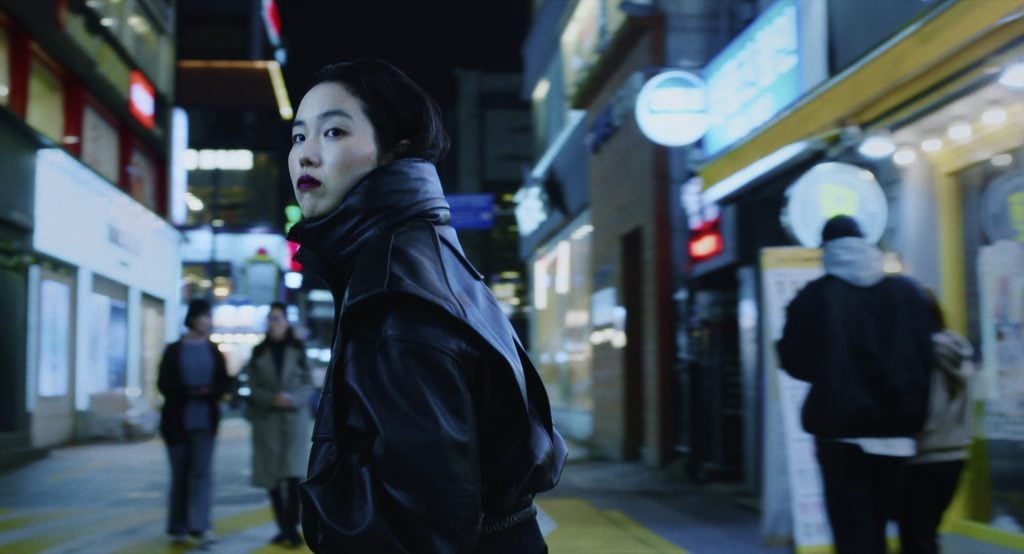
The French-Korean artist opens up about her star turn in the film, which premiered at Cannes in 2022.

Delia Harrington

Return to Seoul could have been a very different movie without its star, French-Korean visual artist Ji-min Park. The film, which premiered at Cannes in 2022 as part of the Un Certain Regard section of the festival, follows a young Freddie, played by Park, as she returns to her native South Korea in an attempt to reconnect with her biological family years after being adopted and raised in France. A first-time actor, Park’s enigmatic performance drives the character study, making it hard to imagine anyone else in the role.
But her performance is not the 20-something artist’s only contribution to the film.
After accepting the role but before shooting began, Park told writer-director Davy Chou (Diamond Island, Golden Slumbers) that there were problems with his script, and she could only participate if they worked together to fix it. Speaking to Artnet News from her studio in Paris, Park said she took notes in almost every line of the script, citing sexism and the male gaze.
“I told him, if we don’t work together hand-in-hand, I can’t do the movie, because I can’t do something that I’m politically ashamed of. It’s impossible,” Park said.
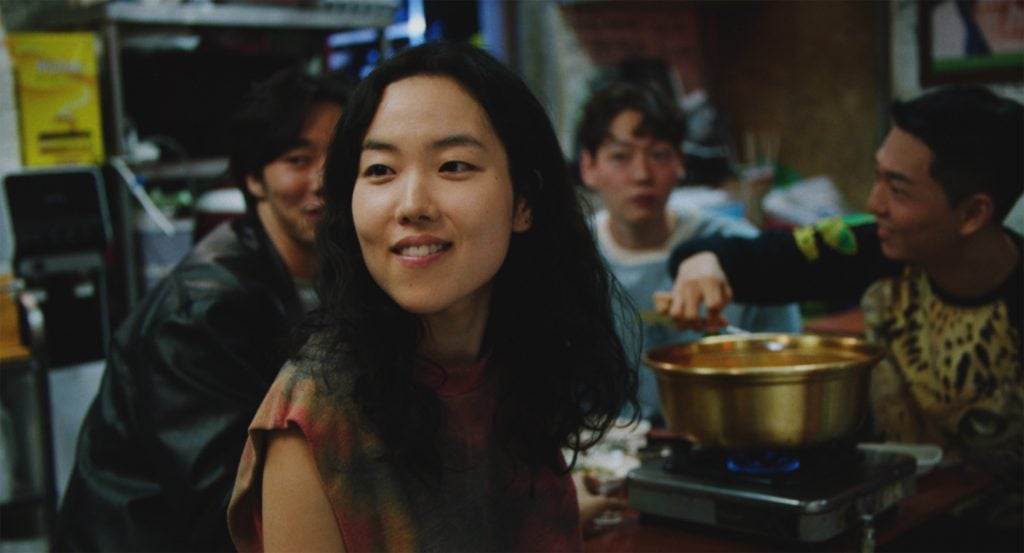
A still from Return to Seoul. Photo courtesy of mk2 Films.
For one, she pressed the Cambodian-French Chou on Freddie’s look for the film’s second section, which features on the film’s poster. Park said that in Chou’s imagining, Freddie was meant to have a sexier look, sporting short dresses, stockings, and a blonde wig—which Park rejected for representing “the hypersexualized, objectified woman that you have in your fantasy.”
Instead, Freddie wears a structured leather jacket with a high collar, a straight bob haircut in her natural color, and has a bold deep burgundy lip. It’s a marked contrast with her fresh face and long, easy waves from the film’s first segment.
“I explained to them that I see Freddie more like a fighter,” Park said. “I searched on the internet and for all fashion creators that I love. I found the jacket and I proposed [it] to Davy, and also to the costume designer of the movie.”
It’s an intriguing look, and one that is emblematic of the film itself. It’s hard not to be drawn to Freddie and to have questions about who she is and what she’s about, even if it’s just a first glance of the film’s poster or a still, with no other information. And yet, there’s a hardness and a distance to her, keeping the audience as well as other characters at arm’s length.
“I was fighting for my creation of the character,” said Park, who referred to acting as an act of creation multiple times during the hour-long interview.
In her artistic practice, Park creates sculptures, installations, and layered imagery on canvas. Much of her work has a fluid quality to it, reflecting the fluidity she sees in the paradoxical territory that is created when multiple extremely opposite things meet. And she isn’t interested in lazy metaphors.
“It’s easy for me to say, ‘Oh, yeah, I’m from Korea. I live in France. So yeah, there are two extreme opposite worlds, which are meeting,’” she explained, unimpressed with that hypothetical version of herself. “But it’s more complex than that.”
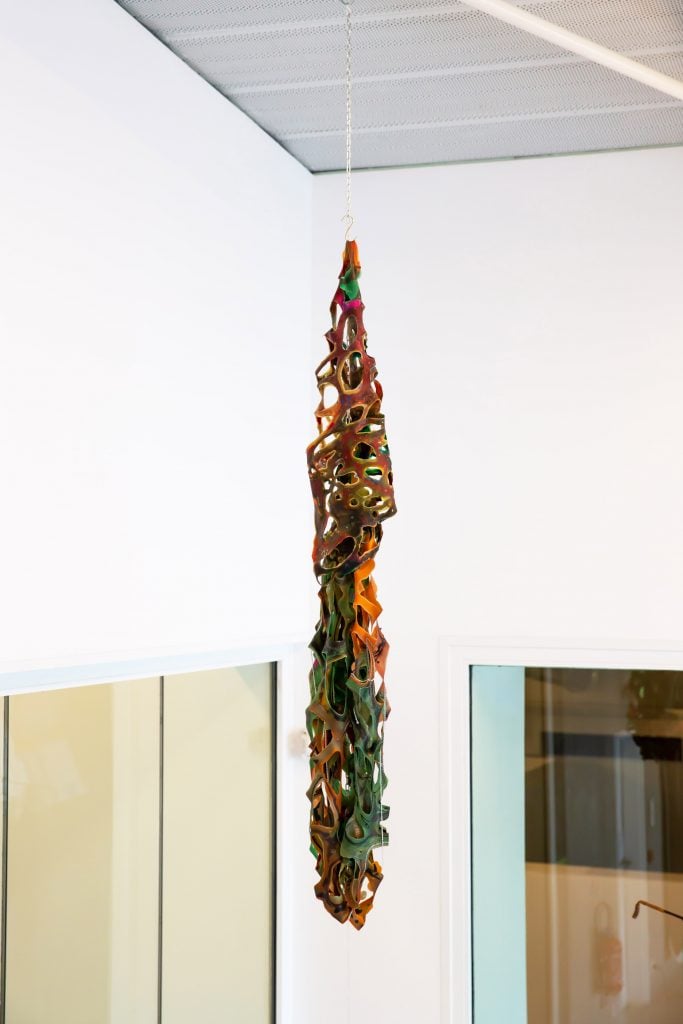
A hanging sculpture by Ji-Min Park. Photo courtesy of the artist.
Park was born and lived in Korea until she was nine, when she moved with her family to France. She sees a lot of commonality between her and Freddie’s experience, as Asian women who grew up racialized in France, experiencing both the trauma of being cut off from their birth culture, and the daily rejection and othering from the society they live in.
“There are no more roots. The violence that a child can feel when the language, the culture, everything is different,” she said. “I think it’s like a trauma.”
As a young South Korean of the diaspora, Park has friends who are adoptees, including the one who introduced her to Chou. She already had an interest in what she calls the “collective history” of the nation’s history of transnational adoption. Above and beyond that, the fact that Freddie’s story is a transracial adoption spoke to Park’s own experience.
“It’s also something that I can understand, when you feel that you belong to a society, but you don’t look like, for example, French society,” she said. “All my experiences as an Asian woman living in France, that’s helped. It’s sad to say that all the violence that I can feel everyday helped me to play that role.”
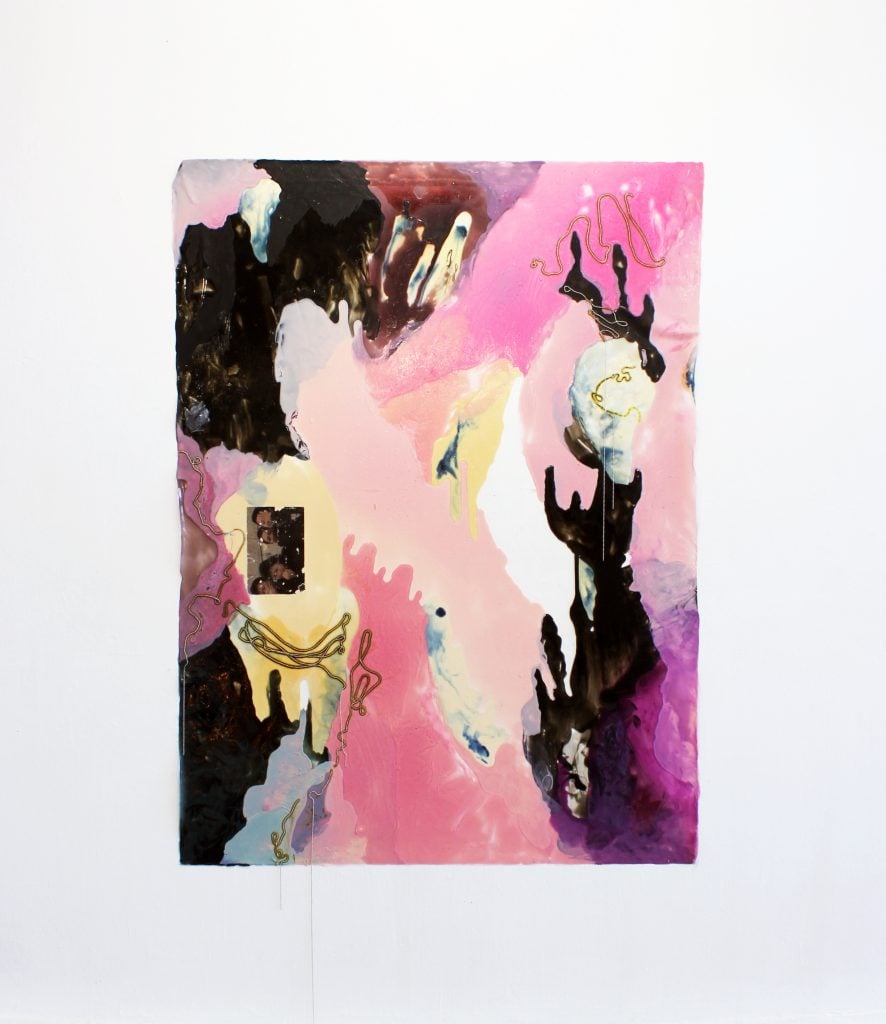
Artwork by Ji-Min Park. Photo courtesy of the artist.
In her visual work, Park enjoys working with resins, metals, and latex, a material that she points out is also used in the film industry. As a natural material, latex is alive, changing color and texture with time.
Park is currently working on a series of connected drawings mixed with latex and resins. The studio itself, which she moved into about a month ago, is the bright white of a new canvas, still neat and clean, but already bearing signs of her work. It features several of the component drawings from the overall work-in-progress behind her, while one of her signature hanging net-like, latex sculptures drips into view behind her, and another of her sculptures wraps around a column, chain-like.
When asked whether her foundation as an artist helped her stand toe-to-toe with the director and see herself as an equal artistic partner with a right to work on the script, Park answered, “absolutely.”
She continued: “Davy told me a lot of times that if I was someone who has the desire to have a career in the acting field, I would probably not have acted like that.”
Park is a reluctant, perhaps even accidental, actor. She wasn’t going out on auditions, has no technical background in acting, and did not seek out the role, though she did film a test for it, at Chou’s prompting. After a mutual friend introduced her to the director, they met up for coffee in Paris and talked for something like three hours, mostly about their lives.
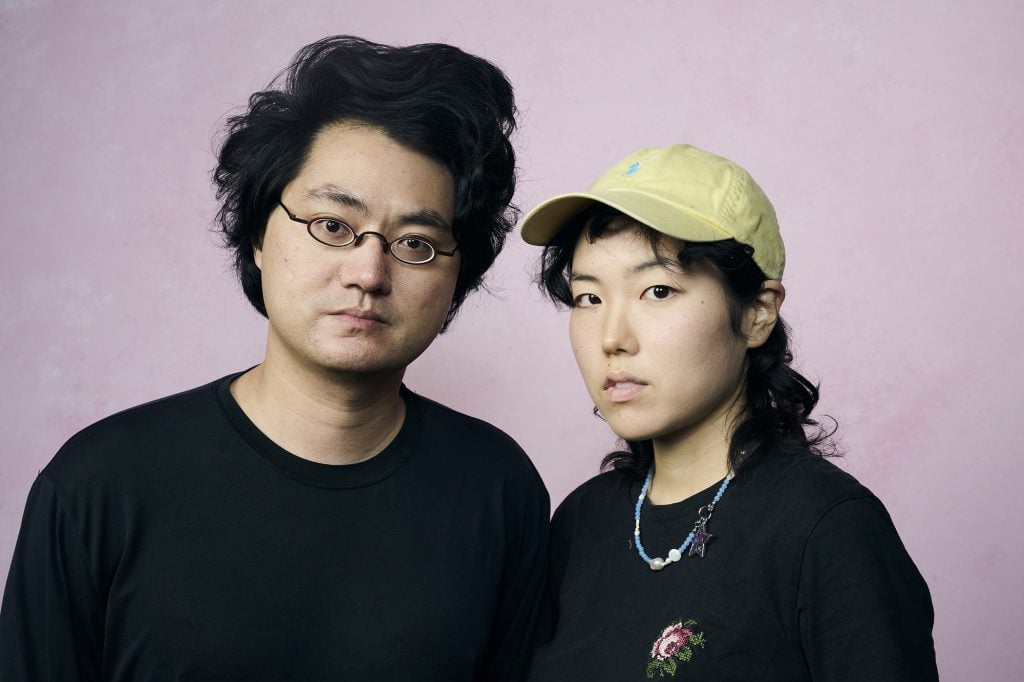
Davy Chou and Ji-Min Park. Photo: Gareth Cattermole/Getty Images.
That foundation served them well when they got into the intense and vulnerable work of deconstructing Chou’s script. Chou had been willing to talk through Park’s questions and feedback, but she could tell he wasn’t prepared for how deep they needed to go in order to work through the script. As a fellow artist, she could understand how hard it can be when someone criticizes your creation.
As Chou told Deadline during a joint interview at the Busan International Film Festival, they ended up creating the character that now lives on screen in the film together. An intense process, but one they’re both proud of.
“He told me a few times that he was really grateful to meet me, not only because I changed something in his movie, but he for him as a human being, as a man. [He told me that] our work together changed him, even in his relationship with his girlfriend,” Park said. “When he told me that I was like, ‘Okay, I’m proud of what we made together.’”
While Park is a non-professional in terms of acting, she’s clearly an artist, and carries herself with the kind of clarity of purpose that comes from being in touch with one’s artistic aims.
“I have no technical work in acting, so I had to really trust myself,” Park said. “I put so much from myself into my work or into my body to play a character. I think the bases [of both artistic endeavors] are the same.”
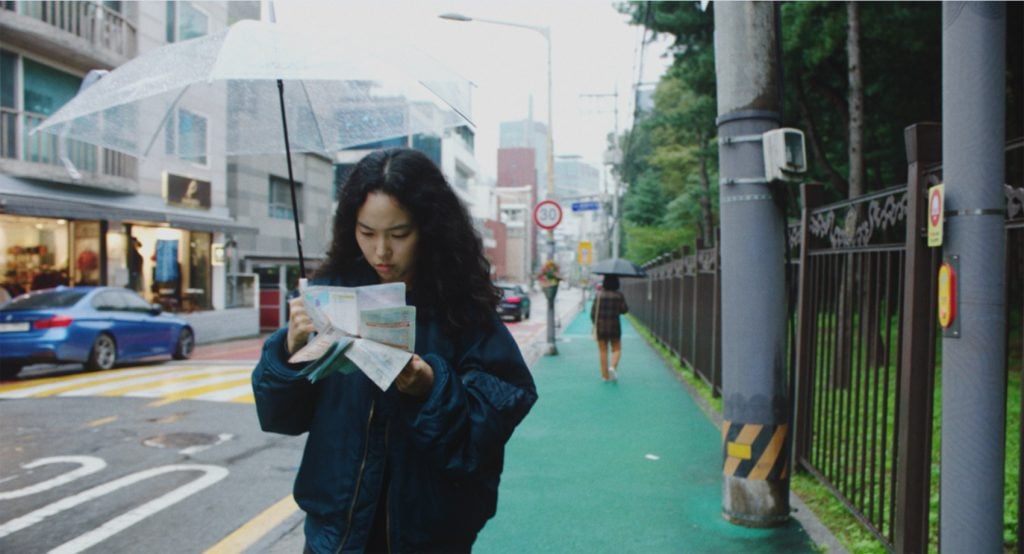
A still from Return to Seoul. Photo courtesy of mk2 Films.
While filming for Return to Seoul was remarkably quick for a feature film—just 29 days in South Korea and two days in Romania—it didn’t necessarily feel that way for Park. She had to set aside her work for the duration of the filming, which she described as “really painful.” And then came the global festival circuit, with the director and star traveling and doing press to promote the film.
“The journey is wonderful, but also really bizarre for me. I’m like, ‘wow, I’m touring all over the world,’” Park said. “But even now, I am not feeling myself as an actress. I really feel that I am a visual artist.”
It’s an unfortunate consequence of the film’s continued success, but one that the artist feels deeply. On top of not being able to create new work, she has had to balance the kind of hectic publicity schedule that comes with an Oscar campaign and a months-long, multi-continent theatrical release with exhibiting her work a few weeks ago.
“I was a bit frustrated about it, because I didn’t have all the energy and all the mental space to prepare [my exhibitions],” Park said. Now that things are settling down and she’s in a new studio space, she’s just happy to be back to work on her art.
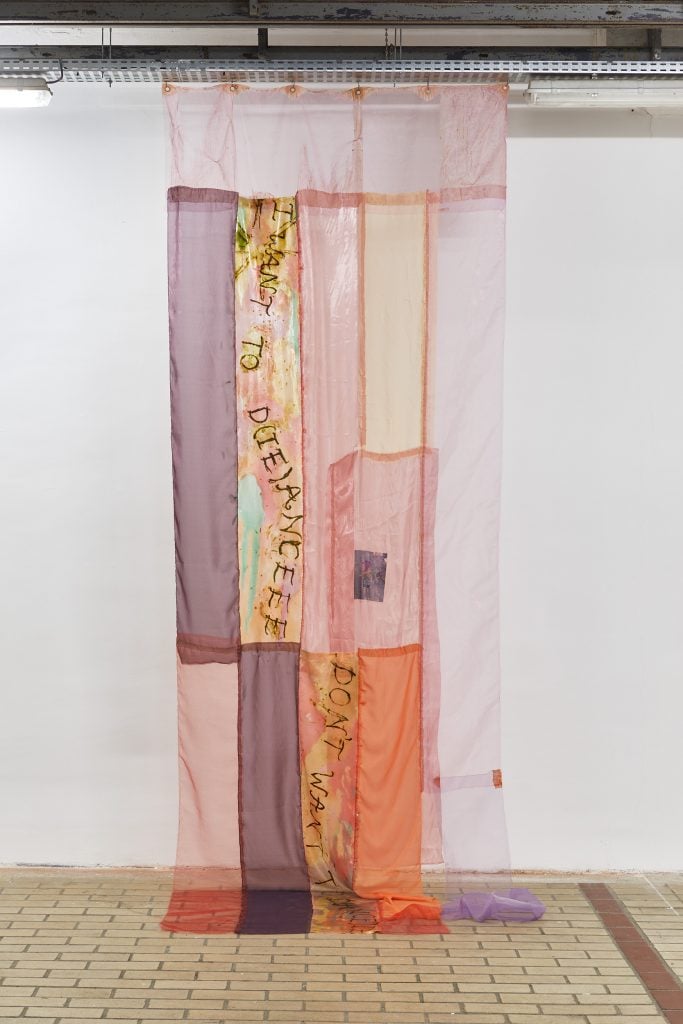
Artwork by Ji-Min Park. Photo courtesy of the artist.
It’s probably too early to definitively say how Freddie and the entire Return to Seoul experience has impacted Park as an artist and as an individual. But Park has already felt some changes.
“I had this wonderful moment of creation,” she said, referring to the film. “But not creative in the same way that I used to do—I think it gives me a very, very fresh energy that I can feel that I can put into my artwork.”
Would she consider acting again? “I’m thinking about it,” she said. “If I have a crush on that project, I think, yeah, I will go for it.”
Her visual art remains her true calling, however.
“I’m an artist. I have to do what I have to do. I have to create—that will never change until my death.”